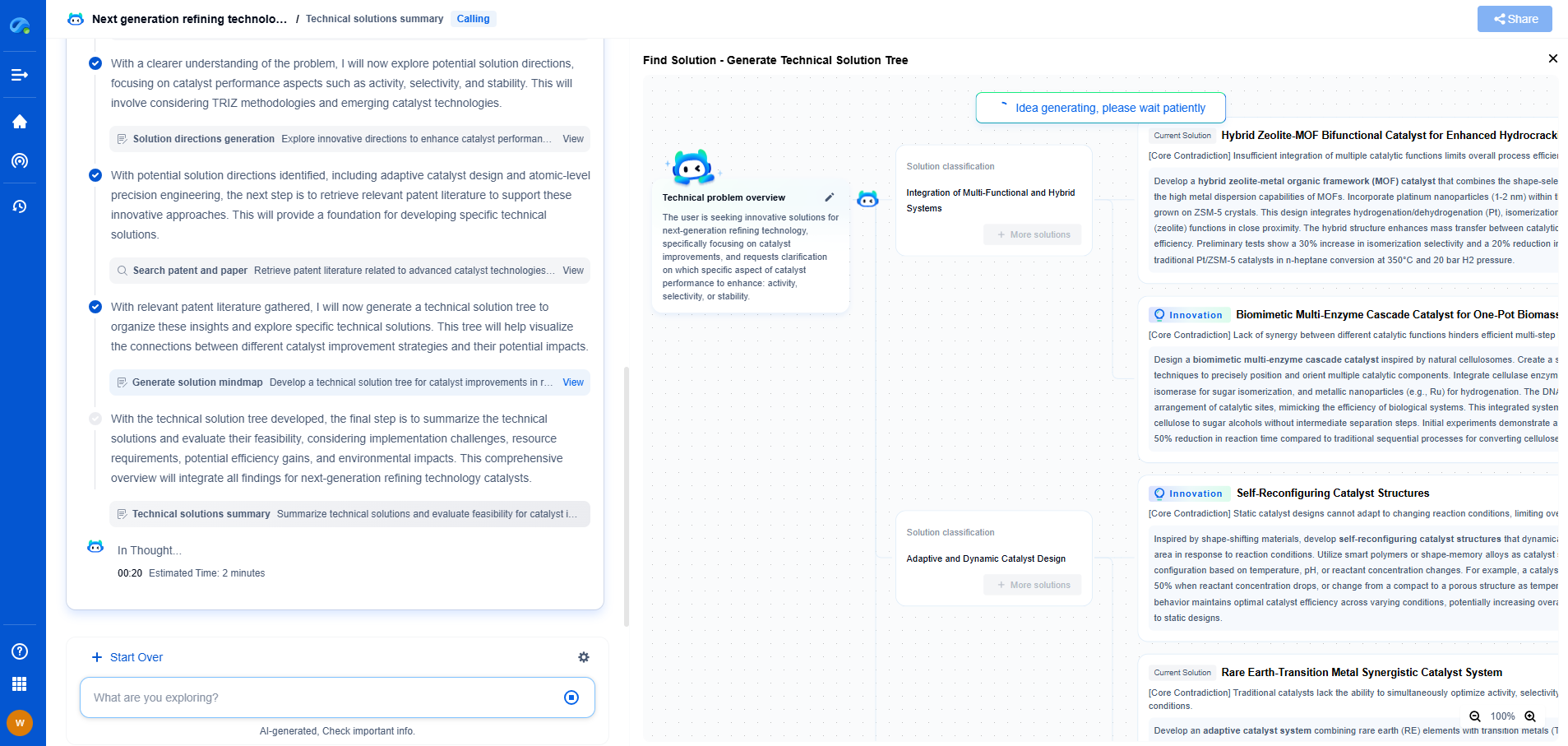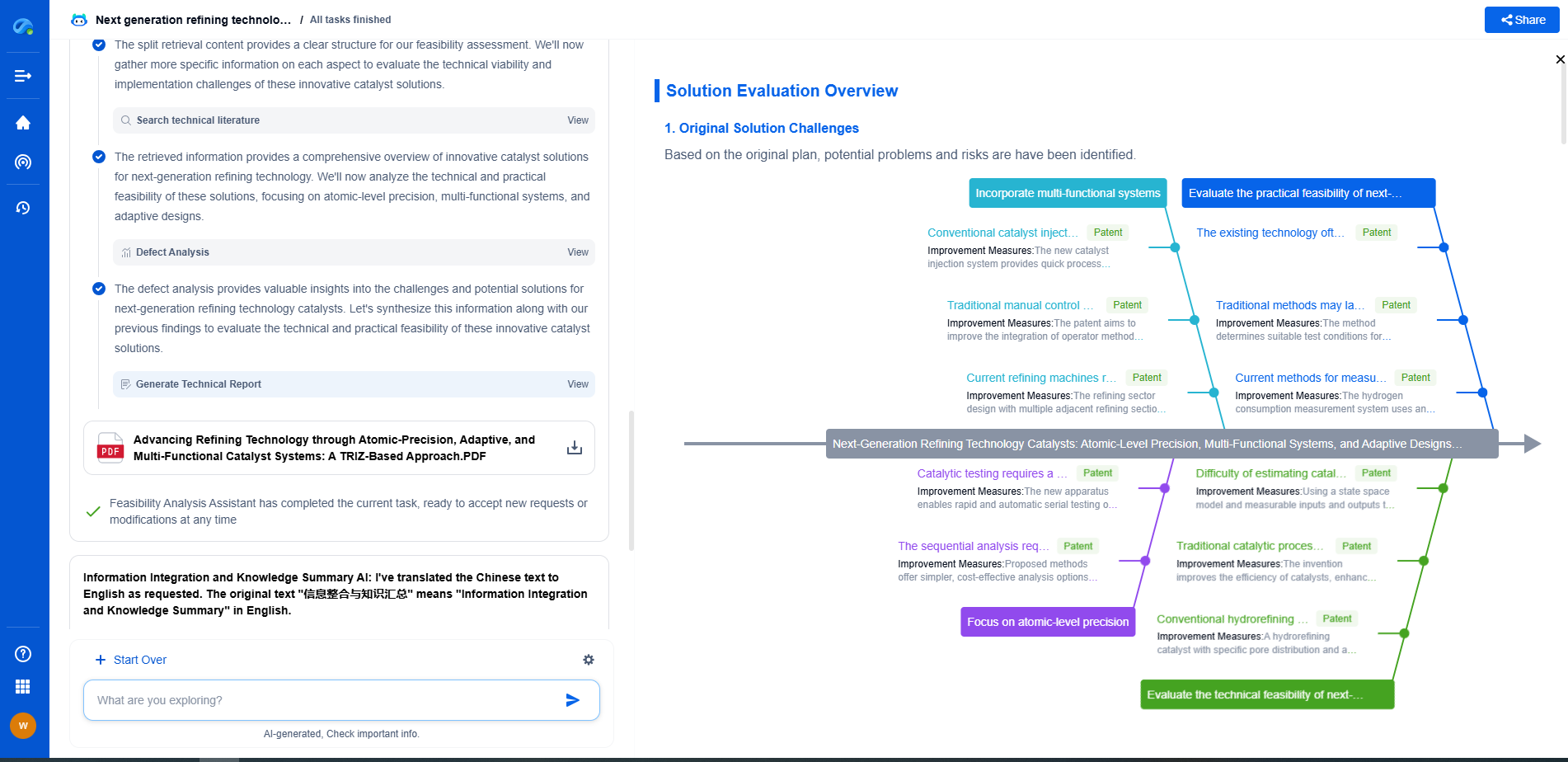Memory Optimization for On-Device Learning
JUL 4, 2025 |
In the rapidly evolving technological landscape, on-device learning has emerged as a promising paradigm. It involves performing machine learning computations directly on devices such as smartphones, tablets, and IoT devices, instead of relying on cloud computing. This approach enhances privacy, reduces latency, and conserves bandwidth. However, one of the key challenges with on-device learning is optimizing memory usage. Given the limited computational resources on these devices, efficient memory management is crucial for achieving high performance and ensuring smooth operation. This article delves into various strategies and techniques for memory optimization in on-device learning.
Understanding Memory Constraints in On-Device Learning
Before discussing memory optimization techniques, it's important to understand the constraints typical of on-device learning environments. Devices like smartphones have limited RAM, storage, and processing capabilities compared to powerful cloud servers. These limitations necessitate careful consideration of memory allocation during the development of machine learning models. Excessive memory usage can lead to performance bottlenecks, crashes, or even device overheating.
Techniques for Memory Optimization
1. Model Compression
One of the most effective ways to reduce memory usage is through model compression. Techniques like pruning, quantization, and knowledge distillation can significantly decrease the size of neural networks without compromising too much on performance. Pruning involves removing redundant connections, quantization reduces the precision of the weights, and knowledge distillation transfers knowledge from a large model to a smaller one. These methods help to fit complex models into the constrained memory of on-device systems.
2. Efficient Data Representation
Data representation plays a crucial role in memory management. Use of sparse matrices and compact data types can drastically reduce memory footprint. Sparse matrices store only non-zero elements, thus saving space, while compact data types like int8 or float16 instead of the standard float32 reduce memory usage without significantly impacting accuracy.
3. Incremental and Online Learning
Traditional batch learning requires loading entire datasets into memory, which is not feasible for on-device learning. Incremental and online learning approaches process data in small batches or even one sample at a time, which minimizes memory requirements. These methods continuously update the model parameters as new data becomes available, making them ideal for devices with limited memory.
4. Memory-Efficient Algorithms
Selecting algorithms that are inherently memory-efficient can also contribute to optimization. For instance, algorithms such as stochastic gradient descent (SGD) have lower memory demands compared to more complex optimization methods. Additionally, using memory-efficient libraries and frameworks that are specifically designed for mobile and embedded systems can further streamline memory utilization.
Balancing Trade-offs
While optimizing memory, it is crucial to balance trade-offs between memory usage, computational speed, and model accuracy. Aggressive memory optimization can lead to loss of accuracy or slower model convergence. Developers need to find a sweet spot that aligns with the application's requirements. This often involves iterative testing and tuning to achieve the best balance between resource usage and performance.
Future Directions in On-Device Learning
As technology advances, new techniques and tools are being developed to further enhance memory optimization for on-device learning. Innovations in hardware design, such as neural processing units (NPUs) and specialized memory architectures, promise improved efficiency and performance. Additionally, continued research into adaptive learning algorithms and model architectures will likely yield more memory-efficient solutions in the future.
Conclusion
Memory optimization is a critical component of successful on-device learning applications. By employing techniques such as model compression, efficient data representation, incremental learning, and memory-efficient algorithms, developers can create powerful machine learning models that operate effectively within the constraints of mobile and embedded devices. As the demand for on-device intelligence grows, continuous research and innovation in this field will be essential for unlocking the full potential of on-device learning.
Accelerate Breakthroughs in Computing Systems with Patsnap Eureka
From evolving chip architectures to next-gen memory hierarchies, today’s computing innovation demands faster decisions, deeper insights, and agile R&D workflows. Whether you’re designing low-power edge devices, optimizing I/O throughput, or evaluating new compute models like quantum or neuromorphic systems, staying ahead of the curve requires more than technical know-how—it requires intelligent tools.
Patsnap Eureka, our intelligent AI assistant built for R&D professionals in high-tech sectors, empowers you with real-time expert-level analysis, technology roadmap exploration, and strategic mapping of core patents—all within a seamless, user-friendly interface.
Whether you’re innovating around secure boot flows, edge AI deployment, or heterogeneous compute frameworks, Eureka helps your team ideate faster, validate smarter, and protect innovation sooner.
🚀 Explore how Eureka can boost your computing systems R&D. Request a personalized demo today and see how AI is redefining how innovation happens in advanced computing.
- R&D
- Intellectual Property
- Life Sciences
- Materials
- Tech Scout
- Unparalleled Data Quality
- Higher Quality Content
- 60% Fewer Hallucinations
Browse by: Latest US Patents, China's latest patents, Technical Efficacy Thesaurus, Application Domain, Technology Topic, Popular Technical Reports.
© 2025 PatSnap. All rights reserved.Legal|Privacy policy|Modern Slavery Act Transparency Statement|Sitemap|About US| Contact US: help@patsnap.com

